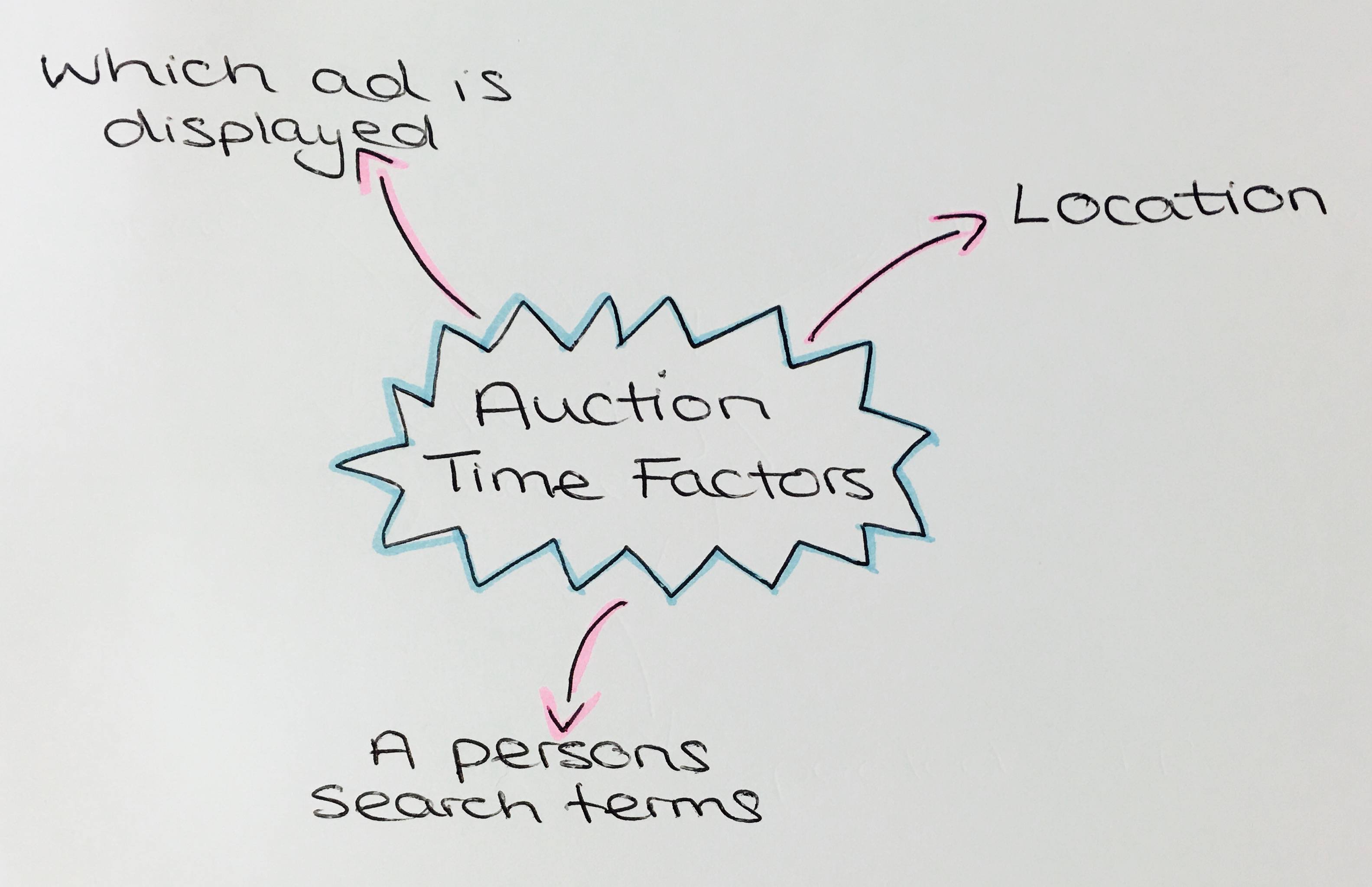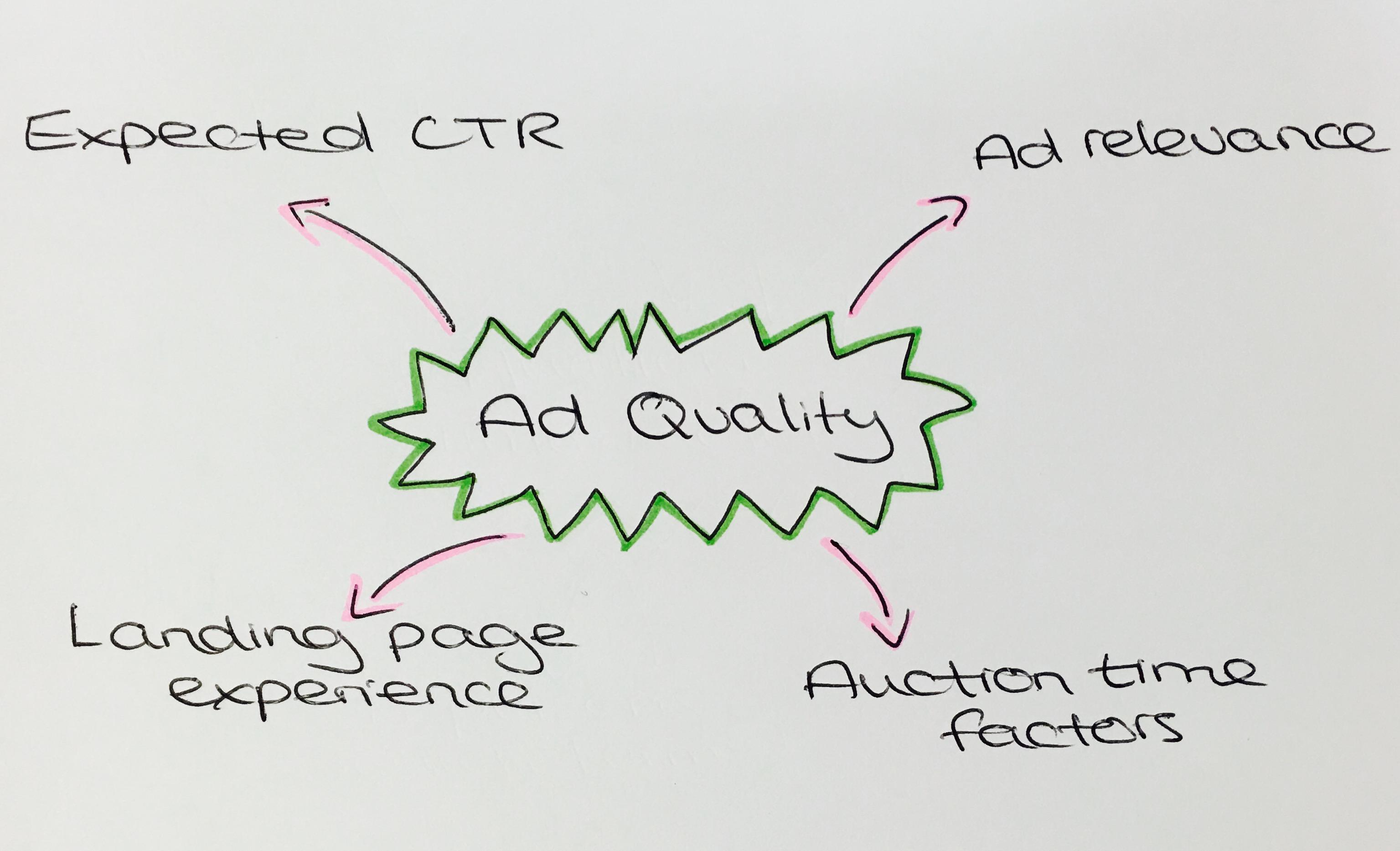The Basics of Biddable: How Quality Score Is Determined, The Impacts on Ad Rank And How They Affect Your Ad

By Nate Wood|26 Oct 2015
An important part of pay-per-click (PPC) is to understand what factors affect your ads and what the impact of these factors are. Quality Score is one factor that affects your Ad Rank in the search results.
What is Quality Score?
Quality Score is a variable that can impact your Ad Rank in Google, Bing and Yahoo. It is a score based on the quality of your ads, and the relevancy of the landing pages. Quality Score is based on a scale of one to ten; one being the lowest and 10 the highest. The components that make up Quality Score are:

- Expected clickthrough rate - the expected rate at which people click-through from the ad to the site. This is based on historical clicks and impressions
- Ad relevance - the relevance of your ad to the user’s search, your landing page and your keywords
- Landing page experience – the user's experiencewhen clicking through from your ad to your site. This is important because the landing page is where the information that the user originally searched for is contained. If the landing page is slow, irrelevant or not optimised, the user experience is going to be poor and increase the likelihood that they will bounce from your site. This results in a wasted click that didn’t convert
Why does the quality of your ad matter?
The quality of your ad can impact your ad position; you could lose out in search results to a higher quality ad which has been able to secure a higher ad position. Displaying at a higher position doesn’t mean you will be paying your maximum bid. Higher quality ads typically have a lower bid estimate and cost-per-click (CPC), only demanding the amount that puts you in front of your competitors. Optimising the quality of your ads is a key component in achieving economies on CPC, which in turn result in lower cost-per-acquisition (CPAs).
Having a higher Quality Score can also boost the eligibility of ad extensions and other ad formats. Higher quality ads are more likely to appear with extensions and other formats. These extensions can include sitelinks, callouts, locations, calls, reviews, apps and structured snippets. There are benefits in using ad extensions which will be covered in next week’s blog post – Stay tuned!
Quality Score and Ad Rank
A good Quality Score shows that your ad and landing page are relevant to the search. In Google AdWords you can view your Quality Score for any of your keywords in a column marked ‘Qual Score’ – if you don’t see this column, change your column view. Quality Score can be found under the ‘Attributes’ heading.

When a user enters a search term your ads compete in a real-time auction. Within this your ad relevance, expected click-through rate and your landing page experience are calculated, along with factors such as your bid. These components are factored into your ad’s rank.
Your Ad Rank determines where your ad is positioned on the page, whether that is at position one, three, or potentially not shown at all. The position of your ad can vary from one search to the next due to the Ad Rank components being re-calculated for every auction.
Ad Rank is determined by three main components; the quality of your ad, keyword bids and the website which the user will be directed to. The higher the rank, the more impressions you are likely to gain, which in turn, can lead to more clicks than if your ad were to appear at a lower position on the page.
How to improve the quality components of your Ad Rank
There are a number of components in improving your ad rank and therefore your position:
- Landing page
As the quality of your landing page is a factor of your Quality Score this is a good place to start. Ensuring that your landing page is high quality and contains relevant information is one way of improving your Ad Rank. If you don’t have a page that’s relevant to the search, now might be the time to create one
- Performance across devices
Knowing how well your ads have been performing on different types of devices is another way to improve the quality of your ad rank components. If your ads haven’t been performing well on certain devices, you should ask 'why?'. Is it because your ad doesn’t lead to a mobile optimised landing page? Or maybe your ad doesn’t have a call extension and users on mobile would prefer to call your business?
- Display URL
The display URL on your ad should also be taken into consideration. This URL is not the landing page the user lands on when they clickthrough, it’s the URL that the user will see within your ad. The display URL is a key part of your ad real estate, so each should be tailored to indicate where on the site a click will lead to
- Where your audience are
It’s important to target your campaigns at locations where your audience live. If your ad isn’t relevant to that area it isn’t going to be of any use. By ensuring that you target the regions where your audience is, you can improve clickthrough rate and therefore positively influence Ad Rank.
- Keep ad copy relevant to keywords
Another way to improve Ad Rank would be to analyse the relevancy of the ad copy to the keywords being targeted. Is your ad copy relevant to the keyword? Does the ad copy contain the keywords? Does the display URL indicate that the landing page will be relevant? If the answer to any of these is no, it’s time to look at optimising your ad copy. It’s important to keep ad copy relevant to keywords because ads are served when they are related to the search term the user enters into the search engine - the more relevant they are the better your clickthrough rate will be. It is also good account management to ensure that you have a well-structured account.
Keywords
On the subject of keywords, make sure that you are analysing your search term query reports (SQR) regularly so that you know what people are actually searching for. That way you can ensure your keywords stay as relevant as possible for your audience. You can add relevant terms to your keywords, and conversely, any irrelevant terms can be added as negative keywords to cut irrelevant impressions. Both of these actions can help boost clickthrough rate.
New keywords that are added to your ad groups automatically get a quality score of six because the system has no historical click and impression data to base the score on. The system may change the quality score for your keywords depending on how well they are performing over time. Once impressions and clicks have been gathered over a few days there will be a more accurate data set to base the quality score on.
What’s the difference between Quality Score, ad quality and Ad Rank?
These are three different metrics, but one impacts the next – ad quality impacts Quality Score, which in turn impacts Ad Rank. The Quality Score is based on expected clickthrough rate, ad relevance and landing page experience. Ad quality and Ad Rank do not incorporate the one to ten quality score estimates of their keywords.
Ad Rank and ad quality take auction time factors into consideration, which are:
- Location
- A person’s search terms
- Which ad is being displayed

Ad quality is calculated based on:
- Ad relevance
- Expected clickthrough rate
- Landing page experience
- Auction time factors

Ad Rank is calculated based on:
- Bid amount
- Expected impact of extensions and other ad formats
- Auction time factors
- Quality Score – ad relevance, expected clickthrough rate and landing page experience

Ensuring that we fully understand the impact that these elements have on our advertising campaigns will help us gain the best chances at appearing in the desired position, one step ahead of our competitors.
Would you like more information or help with your paid advertising campaigns? Contact the team today.